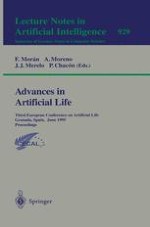1995 | ReviewPaper | Buchkapitel
Noise and the reality gap: The use of simulation in evolutionary robotics
verfasst von : Nick Jakobi, Phil Husbands, Inman Harvey
Erschienen in: Advances in Artificial Life
Verlag: Springer Berlin Heidelberg
Enthalten in: Professional Book Archive
Aktivieren Sie unsere intelligente Suche, um passende Fachinhalte oder Patente zu finden.
Wählen Sie Textabschnitte aus um mit Künstlicher Intelligenz passenden Patente zu finden. powered by
Markieren Sie Textabschnitte, um KI-gestützt weitere passende Inhalte zu finden. powered by
The pitfalls of naive robot simulations have been recognised for areas such as evolutionary robotics. It has been suggested that carefully validated simulations with a proper treatment of noise may overcome these problems. This paper reports the results of experiments intended to test some of these claims. A simulation was constructed of a two-wheeled Khepera robot with IR and ambient light sensors. This included detailed mathematical models of the robot-environment interaction dynamics with empirically determined parameters. Artificial evolution was used to develop recurrent dynamical network controllers for the simulated robot, for obstacle-avoidance and light-seeking tasks, using different levels of noise in the simulation. The evolved controllers were down-loaded onto the real robot and the correspondence between behaviour in simulation and in reality was tested. The level of correspondence varied according to how much noise was used in the simulation, with very good results achieved when realistic quantities were applied. It has been demonstrated that it is possible to develop successful robot controllers in simulation that generate almost identical behaviours in reality, at least for a particular class of robot-environment interaction dynamics.
